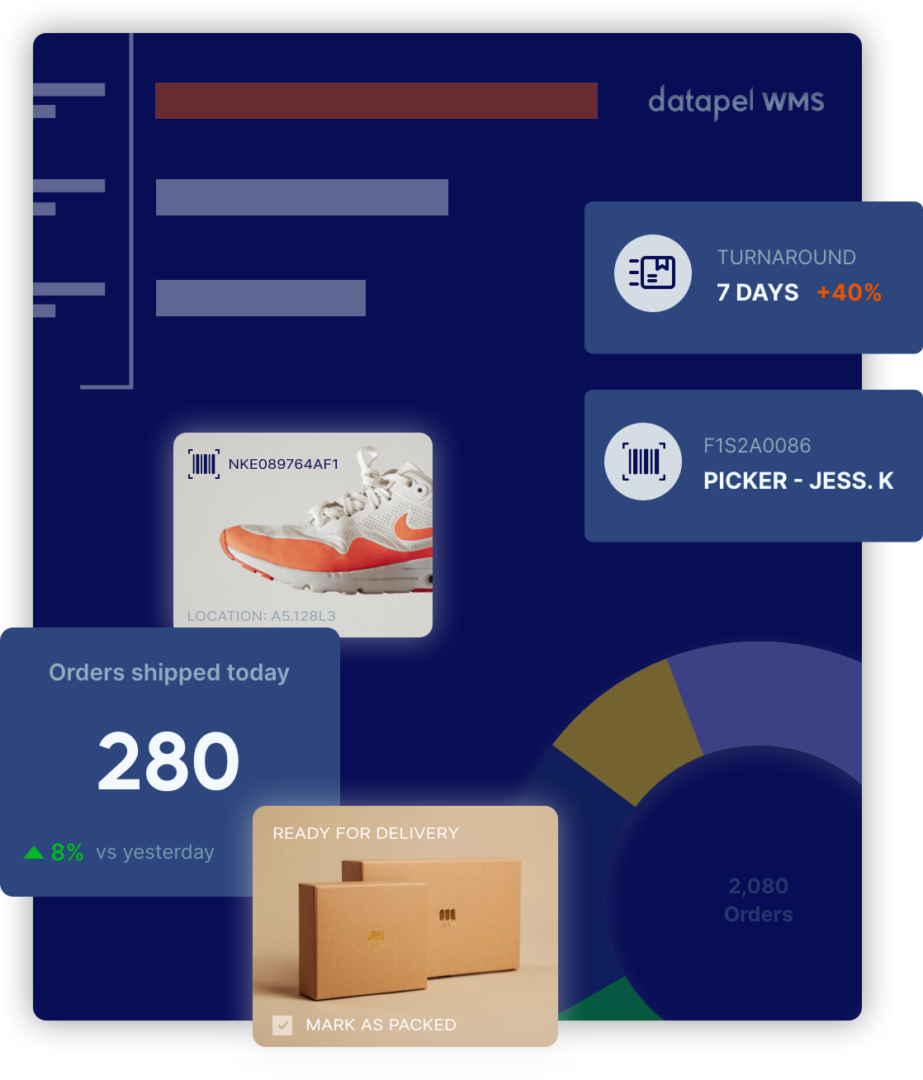How to Handle Last-Minute Order Surges Like a Pro
Contents
We’ve all been there—right before Christmas, Black Friday, or some other big shopping event. Orders start piling in, and it feels like chaos in your warehouse. Customers want their packages yesterday, and you’re racing against the clock to make it happen. Sound familiar?
Don’t worry—you’ve got this! With some smart strategies and the help of a good Warehouse Management System (WMS), you can handle last-minute order surges like a total pro. Let’s talk about how to stay on top of things, keep customers happy, and avoid pulling your hair out.
1. Use Your WMS to Spot and Prioritise Urgent Orders

Think of your WMS as your secret weapon. It’s like having a super-organised assistant that helps you figure out which orders to tackle first. During a big rush, you can’t afford to waste time, so here’s how you can use a WMS to stay on track.
How a WMS Makes Life Easier
- No Guesswork: It sorts orders automatically, so you know what’s urgent and what’s not.
- Saves Time: You can group similar orders together and work faster.
- Keeps You in Control: You get real-time updates on progress, so you’re never left wondering what’s done and what’s still pending.
What You Can Do Right Now
- Prioritise Big Deals: Use your WMS to filter express deliveries or orders from VIP customers. Get those out the door first!
- Group Orders Together: Let’s say you have five packages going to the same area. Pack them together and save on delivery time.
- Keep an Eye on Things: Your WMS can show you if something’s stuck or delayed so you can fix it before it becomes a problem.
Imagine This…
It’s Black Friday, and orders are flooding in. Your WMS shows you 50 next-day delivery orders that need to go out now. You prioritise them, pack efficiently, and ship them off. Meanwhile, local orders are grouped together to make the driver’s job easier. Crisis averted, and customers are thrilled!
2. Keep Customers in the Loop About Delivery Times

Nobody likes surprises—especially when they’re waiting for a package. If you can be upfront about delivery times, including lead times, you’ll earn customers’ trust even when things are hectic. It’s all about clear communication and managing expectations.
Why Being Honest Helps
- Happy Customers: People appreciate knowing what’s happening, even if there’s a slight delay.
- Fewer Complaints: When customers know what to expect, they’re less likely to flood your inbox with “Where’s my order?” emails.
- Trust Builder: Being transparent about lead times builds confidence and keeps customers coming back.
How to Do It Right
- Update Delivery Estimates: Adjust your website’s delivery timelines based on how busy you are. Include clear lead times (e.g., “Dispatch within 48 hours”) to set realistic expectations.
- Explain Lead Times: Let customers know how long it takes to process, pack, and ship their orders. For example, “Our current lead time is 2-3 business days due to high demand.”
- Send Notifications: Use emails or texts to keep customers updated. Inform them when their order is packed, shipped, or delayed.
- Offer Options: If things are running late, give customers choices, such as expedited shipping or in-store pickup.
Why It Works
Imagine a customer places an order and sees: “Due to high demand, your order will ship in 3-5 business days.” They might hesitate, but the clarity reassures them. When they later get an email saying, “Your order has been shipped!”, they’re pleasantly surprised. Explaining lead times upfront avoids confusion, builds loyalty, and keeps everyone happy.
3. Stay on Top of Inventory to Avoid Overselling

Picture this: A customer buys something, only for you to realise it’s out of stock. Awkward, right? Overselling is a common problem during busy times, but you can avoid it by keeping your inventory up to date.
Why It’s a Big Deal
- Customers get frustrated when their order gets cancelled.
- Your team spends extra time fixing mistakes instead of fulfilling orders.
- It hurts your reputation, and that’s bad for business.
What You Can Do
- Automate Stock Updates: Use a WMS to sync inventory across all your sales channels (like your website and online marketplaces) in real-time.
- Set Stock Limits: Create alerts for when stock gets low so you don’t accidentally sell what you don’t have.
- Focus on Popular Products: Do a quick stock check on your bestsellers to make sure your records are accurate.
How a WMS Helps
A WMS does all the heavy lifting here. It tracks what’s coming in and going out, updates your inventory instantly, and even warns you when stock levels are running low. No more overselling headaches!
4. Bonus Tips to Survive the Festive Rush

Want to go the extra mile? Here are some quick tips to make sure you’re ready for anything this peak season:
Make Hot Items Easy to Grab
Move your most popular products to spots in the warehouse where they’re easy to access. This simple trick can save loads of time.
Have a Backup Plan
Stuff happens—deliveries get delayed, supplies run out. Be ready with a Plan B. Maybe that’s sourcing from a backup supplier or offering a substitute product to customers.
Keep Your Team in the Loop
Communication isn’t just for customers—it’s for your team too! Have quick team meetings to share updates, solve problems, and keep everyone motivated.
Wrapping It Up
Handling last-minute order surges can be stressful, but with the right tools and strategies, you can crush it. A WMS helps you stay organised, clear communication keeps your customers happy, and smart inventory management keeps things running smoothly.
So, next time the orders start pouring in, take a deep breath, follow these tips, and know you’ve got it under control.
Want to make things even easier? Check out Datapel’s WMS. It’s designed to help you handle busy seasons without breaking a sweat.
Datapel helps businesses like yours cut costs, work efficiently, and take control of inventory like a pro.
FAQs
1. What’s a WMS, and why do I need it?
A WMS (Warehouse Management System) is like your warehouse’s brain. It helps you organise orders, track inventory, and work faster—especially during busy times.
2. How can I keep customers happy if there’s a delay?
Be upfront about what’s happening. Update delivery times, send notifications, and offer options like in-store pickup to keep them in the loop.
3. What’s the biggest challenge during order surges?
Staying on top of inventory is a big one. Overselling can lead to unhappy customers and wasted time fixing mistakes.
4. How can I prepare my warehouse for peak times?
Make your bestsellers easy to grab, train your team to work efficiently, and have a backup plan for unexpected problems.
5. Why does communication matter during busy periods?
Clear communication builds trust. When customers know what to expect, they’re more likely to be patient and stick with you, even if things get hectic.

In my role, I oversee the development of insightful blogs that delve into the intricacies of warehouse management. Each piece reflects my dedication to empowering businesses through informative content. Through my team’s extensive experience in the industry, we aim to bring clarity to the complexities of WMS, helping businesses make informed decisions.
Join me on a journey through the ever-evolving landscape of warehouse technology as we explore the latest trends, industry insights, and practical tips to streamline your operations. Feel free to connect, and let’s embark on a collaborative exploration of how WMS can redefine your business efficiency.
Cheers to innovation, efficiency, and the exciting world of warehouse management!







